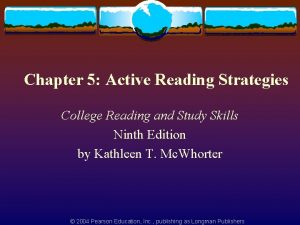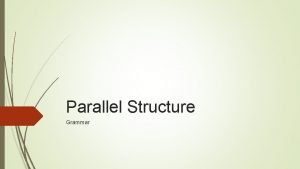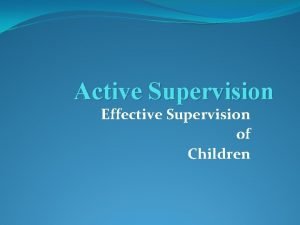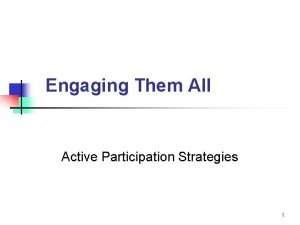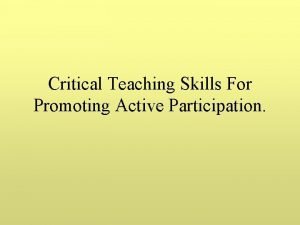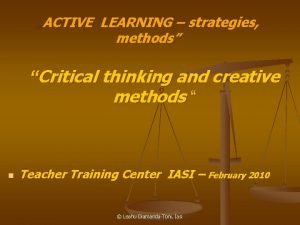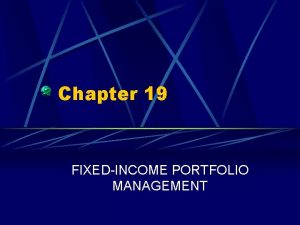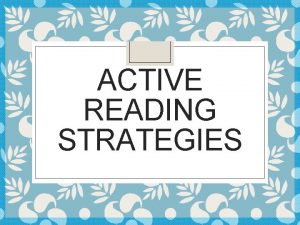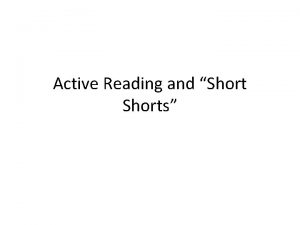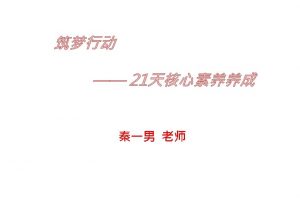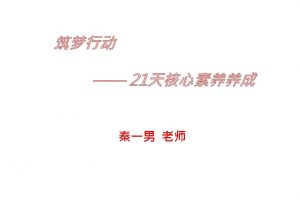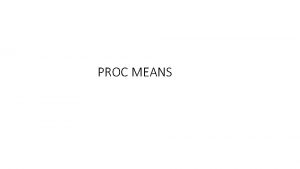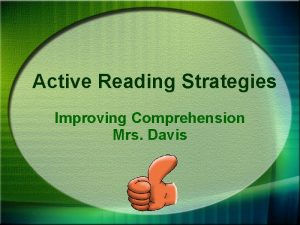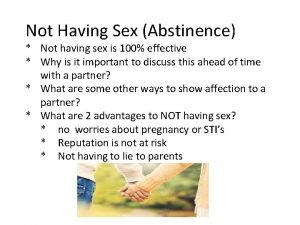Active Reading Strategies Active reading means having a









- Slides: 9

Active Reading Strategies

Active reading … • means having a full understanding of whatever you are reading. • You don't just read passively but think as you read.

SQ 3 R • stands for “Survey, Question, Read, Recite, Review” • helps you understand more of what you’re reading as you’re reading it the first time.

Step 1: Survey • Don’t read the whole text at first • Glance through (or survey) the passage to identify the subject matter, the point of view, and the overall purpose of the passage. (i. e. Skim the text) • This should take no more than two minutes.

Step 2: Question • In 30 seconds or less, ask questions about the passage, for example: - What is this passage about? - Why does this passage exist? - What question is this passage trying to answer? - Can this text help me? - Does it give me any useful information that I can use? Such questions help you focus on your subject

Step 3: Read (R 1) • • Start reading the passage – actively. Underline and/or circle claims. [What is a claim? ] Underline and/or circle key words. [What are key words? ] Make quick notes in the margins of the passage: • • • Is the author supporting an idea? Circle a word or phrase and put a plus ( + ) in the margin next to it! Is the author rejecting an idea? Circle the phrase and write a minus ( – ) next to it! Is something surprising (to you or to the author or to a character/researcher mentioned in the text)? Circle or underline thing and put an exclamation point ( ! ) next to it! Is something confusing (either to you or to the author or to somebody mentioned in the text)? Write a question mark! (? ) Circle “the But”! Contrast words (eg: although, not, but, yet, however, nevertheless, in fact, etc. . . ) signal a shift in the author’s argument, which is always important to pay attention to. Circle "the And"! Continuation words (because, since, therefore, and, additionally, etc. . . ) signal that the author is about to emphasize or restate an important part of the argument. The same is true for semicolons! ( ; )

TOP TIP: The most important claims and conclusions are usually found in the first and last sentences of a paragraph. On your first read-through, pay more attention to the bones of the passage, and less attention to the evidence that backs up those claims and conclusions. If you understand the structure of the passage first, you’ll know where to find the supporting evidence you need if and when you are asked about it.

Step 4: Recite (R 2) • This is the most important part of effective Active Reading. • The second "R" stands for Recite – in your own words. • After you read each paragraph, say back to yourself what it was about - using your own words. • By summarizing, you can gain control of the text and prove to yourself that you understand what you just read.

Step 5: Review (R 3) • Once you reach the end of the passage, say back to yourself what the point of the whole passage is - again, using your own words.
 Six active reading strategies
Six active reading strategies Active reading strategies college
Active reading strategies college Parallel structure
Parallel structure While reading activities
While reading activities Active learning strategies to promote critical thinking
Active learning strategies to promote critical thinking Objectives of supervision
Objectives of supervision Anita archer active participation
Anita archer active participation Rehearsal strategies
Rehearsal strategies Active learning strategies to promote critical thinking
Active learning strategies to promote critical thinking Active fixed income portfolio management strategies
Active fixed income portfolio management strategies

